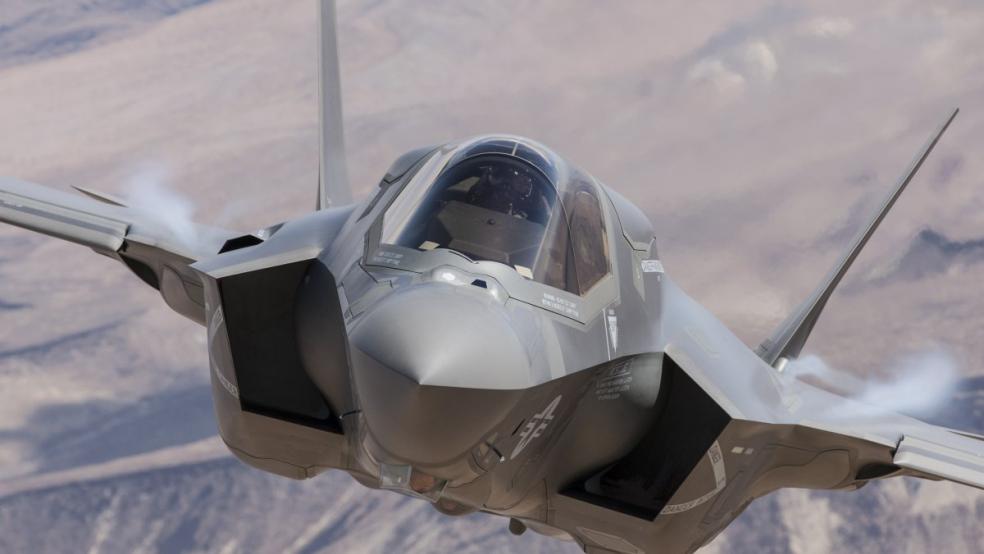What a relief for the parents when the baby finally takes its first steps. That’s how the brass at the U.S. Air Force felt on Tuesday when they declared an initial squadron of F-35A fighter jets ready for combat.
After years of delays on the Pentagon’s largest and most expensive weapons project ever, the Lightning II Joint Strike Fighter will actually be airborne and ready to take on real enemies, though combat may still be many months if not years away.
Related: The 10 Most Expensive Weapons in the Pentagon’s Arsenal
"The U.S. Air Force decision to make the 15 F-35As ... combat ready sends a simple and powerful message to America's friends and foes alike - the F-35 can do its mission," the program's chief, Air Force Lieutenant General Chris Bogdan, said in a statement.
There is at least one wrinkle, though. Full operational testing has yet to begin for the jet, and the aircraft won’t be able to carry the full suite of weapons currently used by the much older F-16 until 2020.
And not everyone is convinced the $400 billion and counting plane is as capable as the Pentagon claims it is. A study by the National Security Network reports that new Russian and Chinese aircraft can outgun and outmaneuver the F-35. “Going forward, full investment in the F-35 would be to place a bad trillion-dollar bet on the future of airpower based on flawed assumptions and an underperforming aircraft.”
About a year ago, The Fiscal Times reported that a high-tech industry had emerged around the “perennially delayed” F-35, its software glitches, its limited acceleration, combat radius and ability to carry a large payload.
This past spring, the Project on Government Oversight, an independent watchdog group, estimated that the long list of unresolved F-35 problems would mean the aircraft would not be combat ready until 2022.
The aircraft has been deemed “too big to kill.”
How, then, could the Defense Department claim “all systems go” on an aircraft that has been in flight tests for more 10 years and still failed to meet its benchmarks. Less than a year ago, the Defense Department report showed multiple failures and deficiencies in the fuel system, radar system, maneuverability, and so son.
Even though the plan isn’t perfect, it does fly, and the Air Force claims it can detect enemy aircraft and other threats far beyond current ranges.
Let’s hope nobody shoots one down. If they do, $100 million goes with it.





